The Royalist mint in Durango
by José Antonio Juárez
On 8 October 1810, at an urgent meeting in Sombrerete, Zacatecas, convened by the governor of the internal provinces, Commander General Nemesio Salcedo, who resided in the town of San Felipe de Chihuahua, gave permission[text needed] for provisional mints to be opened in Chihuahua, Durango and Sombrerete. The royalist authorities allowed the establishment and operation of mints in some royalist centres in New Spain, such as in the province of Nueva Vizcaya, which had the purpose of supplying them with cash and avoiding the risks involved in moving the precious metals to Mexico City for minting.
This permission became official on 25 January 1811, and the provisional mint in Durango began operations on 1 February 1 of the same year. Initially, this establishment was under the direction of the merchants Felipe López and Manuel Iglesias.
The first coins to be minted were those of 8 reales with the coat of arms of Nueva Vizcaya, on the reverse, and on the obverse, the coat of arms of Spain, the denomination, the initials R. M. (for the assayer, Ramón Mendoza) and Do mint mark. Despite the care that was given to the minting process, the coins were crude and imperfect, and their price plummeted by up to 50%.
The minting continued in 1812 with the difference of having the armed bust of the monarch Ferdinand VII on the reverse. in addition, lower denominations of ½. 1, 2 and 4 reales were produced, though made with very bad design due to the lack of expertise of the assayer himself. In May 1814, the governor of the provinces even asked the viceroy to send a engraver to this provisional mint, as well as an expert for the construction of machinery and the repair of the existing one; but this request was ignored by the war in which New Spain found itself.
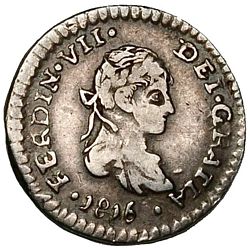
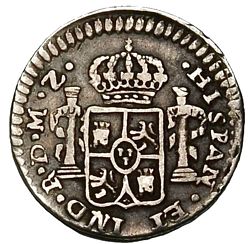
KM-74.1 ½ real 1816 Durango D MZ (Stack’s Bowers Baltimore auction, 28 March 2011, lot 8046)
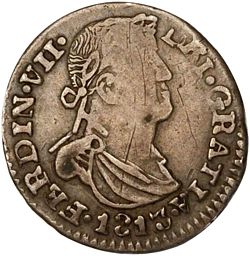
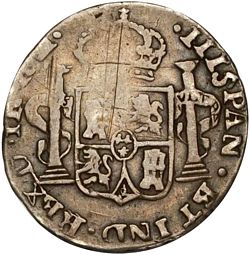
KM-83.1 1 real 1813 Durango D RM (Stack’s Bowers Chicago ANA auction, August 2011, lot 20507)
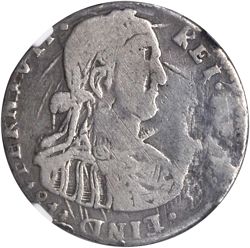
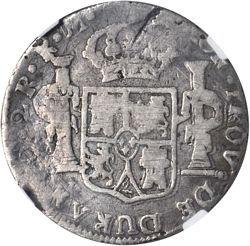
KM-92.2 2 reales 1811 Durango D RM (Stack’s Bowers auction, 4 October 2017, lot 70491)
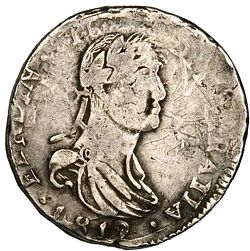
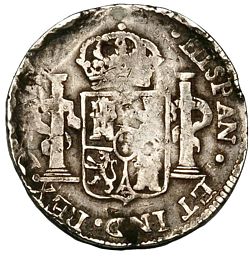
KM-93.1 2 reales 1812 Durango D RM (Stack’s Bowers Baltimore auction, 28 March 2011, lot 8047)


KM-93.1 2 reales 1814 Durango D MZ (Stack’s Bowers Baltimore auction, March 2010, lot 70491)
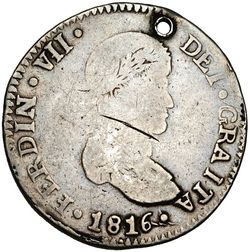
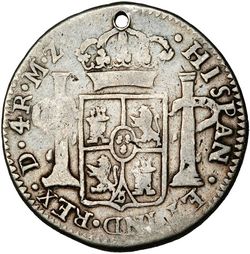
KM-102.1 4 reales 1816 Durango D MZ (Stack’s Bowers Baltimore auction, 16 November 2012, lot 11112)
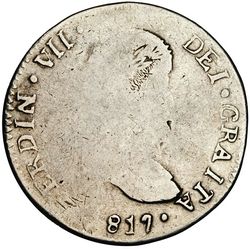
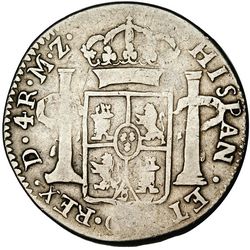
KM-102.1 4 reales 1817/6 Durango D MZ (Stack’s Bowers Baltimore auction, 16 November 2012, lot 11113)
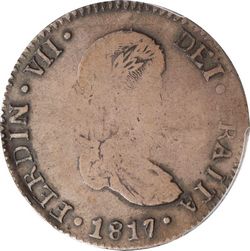
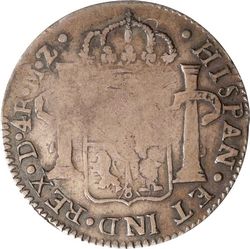
KM-102.1 4 reales 1817 Durango D MZ GRAITA instead of GRATIA (Stack’s Bowers auction, 26 August 2022, lot 34173)
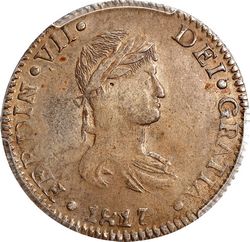
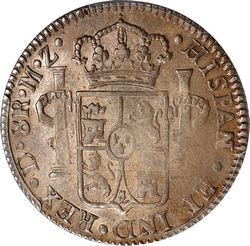
KM-111.2 8 reales 1817 Durango D MZ (Stack’s Bowers NYINC auction, 13 January 2023, lot 21209)
The provisional mint in Durango was the only one that minted copper coins, such as the octavos with the crowned monogram of Ferdinand VII on its obverse, and on the reverse, the legend "EN DURANGO OCTAVO DE REAL", from 1812 to 1818.
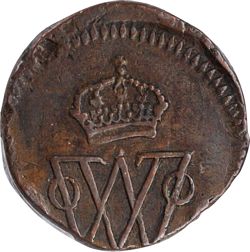
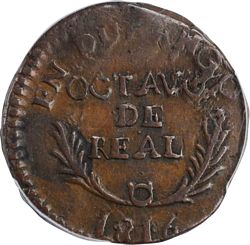
KM-61 ⅛ real 1816 Durango (Stack’s Bowers NYINC auction, 21 January 2020, lot 23189)
